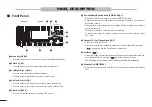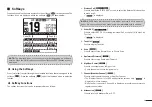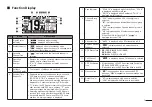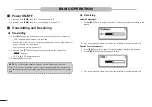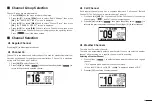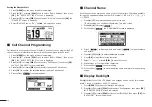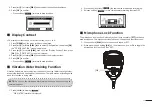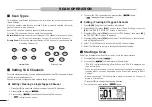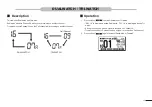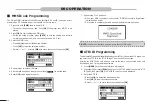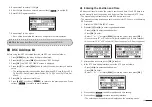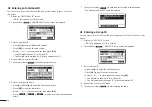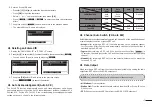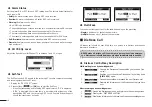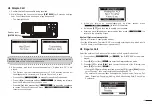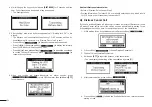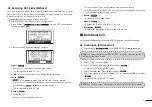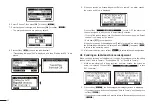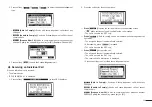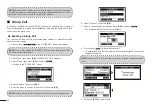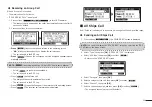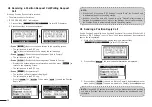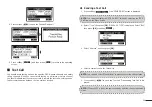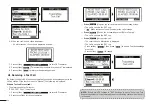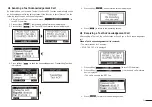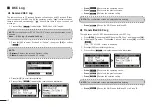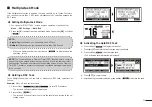
18
■
◆
Alarm Status
Set the alarm ON or OFF for each DSC related item. The factory default setting for
each type is: ON.
•■
Safety:
An alarm sounds when a Safety DSC call is received.
•■
Routine:
An alarm sounds when a Routine DSC call is received.
•■
Warning:
An alarm sounds when:
✳
No MMSI code is entered.
✳
The position data has not been received for 2 minutes after turning ON the radio.
✳
The received position data has not been updated for 10 minutes.
✳
The received position data has not been updated for 4 hours.
✳
The manually entered position data has not been updated for 23.5 hours.
•■
Self-Terminate:
An alarm sounds when duplicate DSC calls are received.
•■
Discrete:
An alarm sounds when a lower priority call is received while receving a
high priority call.
■
◆
CH 70 SQL Level
Adjust the Squelch level for Channel 70 to between 1 and 10, or open.
■
◆
Self-Test
The Self-Test sends DSC signals to the receiving AF circuit to compare the sending
and receiving signals at the AF level.
1.
Display the “SELF-TEST” screen.
2.
Press softkey [
] or
[OK]
key to start the Self-Test.
•
When the transmitting and receiving DSC signals match, “OK” is displayed.
•
If “NG” is displayed, that means there is a problem with at least one of the
transmitting DSC and the receiving DSC circuit. Contact Oricom Support
should the transceiver be faulty.
■
◆
Multi-Task
You can select the type of task for the radio, depending on the presetting.
•■
Single:
Handles only 1 task at the same time.
•■
Multiple:
Handles up to 7 tasks at the same time.
■
■
Distress Call
A Distress call should be sent if the ship or a person is in distress and requires
immediate assistance.
NEVER make a Distress call if your ship or a person is not in an emergen-
cy. A Distress call should be made only when immediate help is needed.
■
◆
Distress Call Softkey Description
While waiting for an Acknowledgement:
1.
[
]: Cancels the Distress call and enables you to send a Can
-
cel call.
2.
[
]: Enables you to resend the Distress call by holding down
[DISTRESS]
again.
3.
[
]: Pauses the countdown to resend the next Distress call.
4.
[
]: Displays the information of the Distress call that you have
sent.
After receiving an Acknowledgement:
1.
[
]: Closes the Distress operation, and returns to the operating screen.
2.
[
]: Displays the “DISTRESS HISTORY”.
3.
[
]: Display the information of the received Distress Acknowledgement.
Summary of Contents for MX1100G
Page 48: ...Ref 12102020...
Page 49: ......

